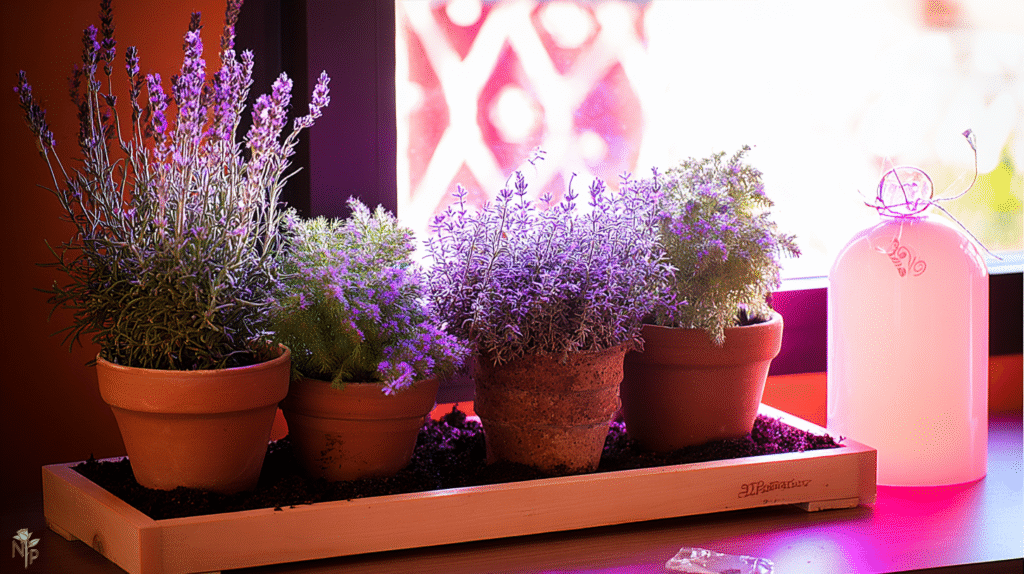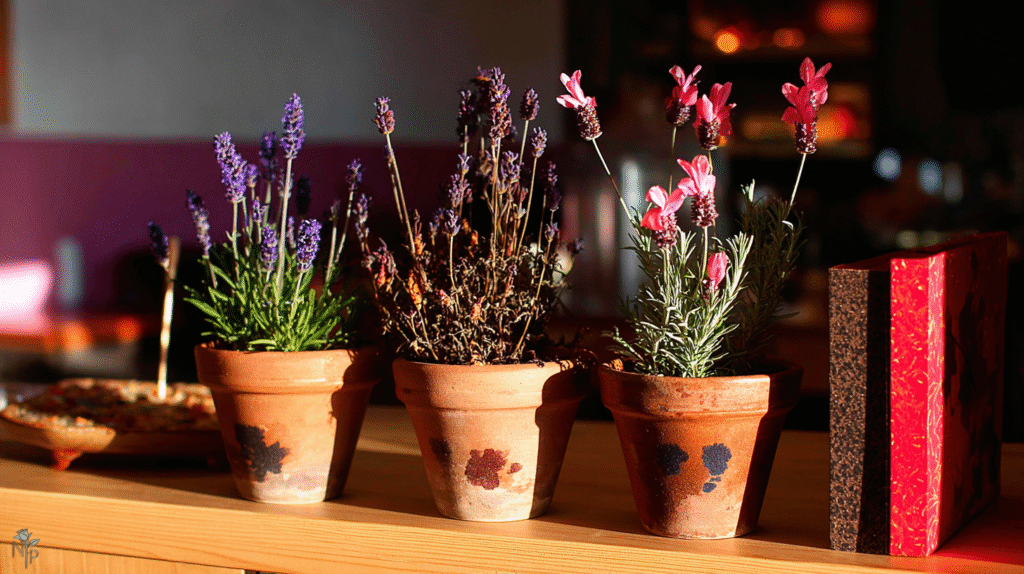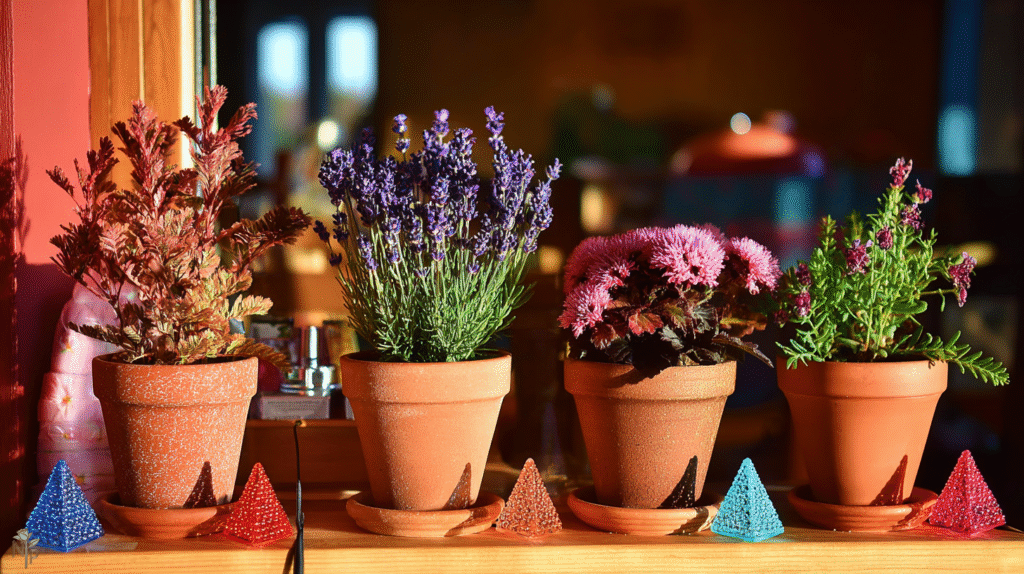My indoor lavender journey started with a spectacular failure. I bought a gorgeous English lavender at the farmers market, convinced I’d have a fragrant purple paradise on my windowsill. Six weeks later, I had a crispy brown skeleton that smelled like disappointment.
“But lavender grows wild in fields!” I protested to anyone who’d listen. Yeah, turns out those fields are in the Mediterranean, not my 72-degree apartment with forced air heating.
After killing four different lavender plants (and spending roughly $80 on what became very expensive compost), I finally cracked the code. The secret wasn’t better care — it was choosing varieties that actually tolerate indoor conditions. Three years later, I have lavender blooming on my windowsill. Here’s everything I learned about picking the right type for indoor survival.
Why Most Lavender Varieties Hate Your House
Let’s start with the painful truth:
lavender evolved in the Mediterranean. It wants:
- Intense sun (8+ hours daily)
- Cool nights (50-65°F)
- Excellent air circulation
- Low humidity
- Lean, rocky soil
- Winter chill for blooming
Your house offers:
- Filtered window light
- Constant 70°F temperature
- Stagnant air
- Dry forced air or too-humid summers
- Rich potting soil
- No seasonal temperature changes
See the problem? We’re asking Mediterranean plants to live in climate-controlled boxes. Most varieties just can’t handle it.
The Varieties That Actually Have a Chance Indoors
After extensive (expensive) trial and error, here are the only varieties I’ve successfully grown indoors:
French Lavender (Lavandula dentata)
My top pick for indoors. Less fussy about temperature, tolerates lower light better, and doesn’t demand winter chill. Mine sits in a south window and has bloomed three times this year. The leaves have cute serrated edges, and while the flowers aren’t as fragrant as English lavender, they actually exist, which is more than I could say for my other attempts.
Spanish Lavender (Lavandula stoechas)
The one with the funny “rabbit ear” flowers. More tolerant of humidity than other types, which helps in stuffy indoor air. Needs less winter chill. Mine struggled the first year but now blooms reliably. Bonus: the flowers last longer than other varieties.
Fernleaf Lavender (Lavandula multifida)
Looks different with its lacy leaves, but that’s actually an advantage — more leaf surface area seems to help it cope with lower light. Blooms year-round in warmth. The only lavender that hasn’t minded my apartment’s temperature consistency.
Goodwin Creek Grey (Lavandula x ginginsii)
A hybrid that’s basically lavender for cheaters. Tolerates heat, humidity, and less-than-perfect conditions. Grows faster than true lavenders. Mine went from 4-inch pot to needing division in one year. Not as “authentic” but who cares when it’s alive?
The Varieties to Avoid (Trust Me, I Tried)
English Lavender (Lavandula angustifolia)
The classic. The one everyone wants. The one that will break your heart indoors. Needs significant winter chill to bloom, can’t handle indoor temperatures, demands more light than windows provide. I killed ‘Hidcote’ and ‘Munstead’ before accepting defeat.
Lavandin (Lavandula x intermedia)
Even fussier than English lavender. These hybrids like ‘Grosso’ and ‘Provence’ are field plants, not houseplants. Don’t let anyone convince you otherwise. My ‘Grosso’ lasted exactly 34 days.
Portuguese Lavender (Lavandula latifolia)
Needs tons of space and full sun. Gets absolutely massive. Even if you could keep it alive indoors (doubtful), where would you put a 4-foot wide lavender bush?

Light: The Non-Negotiable Requirement
Even the most tolerant varieties need serious light. “Sunny windowsill” doesn’t cut it unless that windowsill:
- Faces south
- Gets 6+ hours direct sun
- Has no trees/buildings blocking light
My solution: LED grow lights. I resisted for months because it felt like cheating. Then I accepted that cheating with alive plants beats authenticity with dead ones.
My setup:
- Full spectrum LED bulb in a desk lamp
- 6-8 inches from plant
- 12-14 hours daily on timer
- Costs about $3/month in electricity
The difference was immediate. Compact growth instead of stretching, actual flowers, healthy silver-green color. Worth every penny.
Container and Soil: Setting Up for Success
Wrong pot or soil = dead lavender, regardless of variety.
Container musts:
- Terracotta (breathes, dries fast)
- Drainage holes (non-negotiable)
- Wide rather than deep
- Size up gradually
Soil recipe that works:
- 1/3 cactus soil
- 1/3 perlite
- 1/3 coarse sand
- Tablespoon of lime per pot
This mix drains fast and stays lean. Regular potting soil holds too much moisture and nutrients — lavender murder soup.

Watering: Where Dreams Go to Die
More lavenders die from overwatering than any other cause. Even “tolerant” varieties hate wet feet.
My watering reality:
- Check weight of pot, not soil surface
- Water only when light as a feather
- Drench thoroughly, then ignore
- Winter: Maybe monthly
- Summer: Every 2-3 weeks max
That French lavender that’s thriving? I water it less than my cacti. Seriously.
Temperature and Air Flow Matter
Indoor varieties tolerate temperature consistency better, but they still need:
- Day temps 65-75°F
- Slightly cooler nights if possible
- Air circulation (small fan helps)
- Away from heating/cooling vents
My Spanish lavender near the heating vent got crispy in two weeks. Moved to a stable-temperature spot = happy plant.
Realistic Expectations for Indoor Lavender
Even with the right variety and perfect care, indoor lavender won’t match outdoor performance:
- Smaller size
- Fewer blooms
- Less fragrance
- Shorter lifespan (2-4 years vs. decades)
Accept this or stick to dried lavender sachets. I’ve made peace with my “good enough” indoor lavenders.
Maintenance for Long-Term Survival
Pruning: Light trim after blooming, never into woody stems. Indoor lavenders can’t handle harsh pruning like outdoor ones.
Feeding: Almost never. Maybe a tiny bit of slow-release fertilizer in spring. Lean = healthy for lavender.
Repotting: Only when absolutely rootbound. They prefer cramped quarters.
Summer vacation: If possible, give them outdoor time. Mine spend June-September on the balcony and come back rejuvenated.

My Current Success Stories
French lavender by south window: Two years old, blooms spring and fall, compact and healthy. The victory that kept me trying.
Spanish lavender under grow light: Rescued from clearance rack, now thriving. Weird flowers but who’s complaining?
Fernleaf lavender in bathroom: Bright window, humidity from showers doesn’t bother it. Only lavender that worked in higher humidity.
The Bottom Line on Indoor Lavender
Growing lavender indoors is like making a cat do tricks — possible but requiring the right subject and adjusted expectations. Choose varieties bred for containers or warmer climates. Provide intense light (probably artificial). Water like you’re in a drought. Accept imperfection.
My indoor lavenders aren’t the glorious bushes you see in Provence photos. They’re compact, bloom modestly, and need grow lights. But on a February morning when I brush against French lavender and catch that scent? Worth every dead English lavender that came before.
Start with French lavender, invest in a grow light, and prepare for a learning curve. Once you crack the code for your conditions, you’ll have something most people think is impossible — living lavender in your living room. Just maybe skip the English varieties unless you enjoy horticultural heartbreak. 💜






